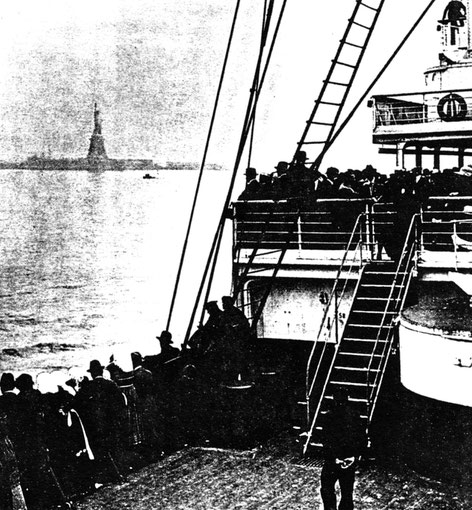New York: best-known immigration gateway

Ellis Island is probably the all-time most significant and best- documented of international mass migration checkpoints. After it opened (in 1891, and after an 1897 fire, again in 1901) all steerage passengers (close to 90% of all immigrants) arriving at New York were inspected there, and their demographic and other personal data recorded on (mostly still extant) passenger lists. Other cities (most notably Boston, Philadelphia and Baltimore) were also well-frequented migration entry ports) but New York had by far the largest influx, and Ellis Island was the first and most extensive federal immigration installation. (Pitkin, Cannato, Keeling, Business of Migration).
When the Ellis Island immigration station opened in 1891, New York had already long been the most important U.S. port city, due to its large, readily accessible and deep-channeled harbor with plenty of berthing space for ships, its size (most populous U.S. city after 1815), its inland transit connections (after the Erie Canal opened in 1825), and its on-shore infrastructure and commercial capabilities. New York’s size and dominance of transatlantic shipping routes and sailings meant that for most European migrants it was the fastest way to reach the United States and potential employment opportunities there.
Throughout the 19th century, well over half of all immigrants to the United States entered the country through New York. Between 1900 and 1914, New York took three-quarters. (Cohn, p. 156, U.S. Statistical Abstracts).
For sources cited above, see: this page.
Information concerning the impact of immigrants on New York City.
 Mass migration
as a travel business
Mass migration
as a travel business
